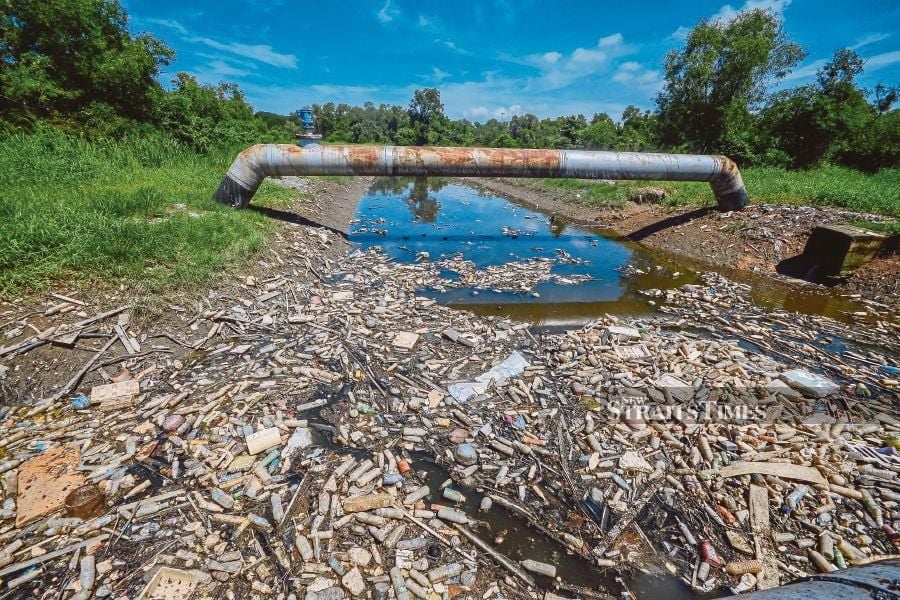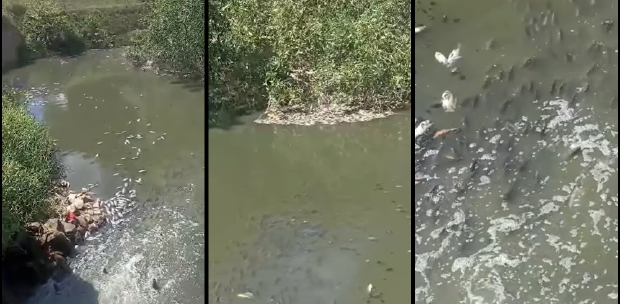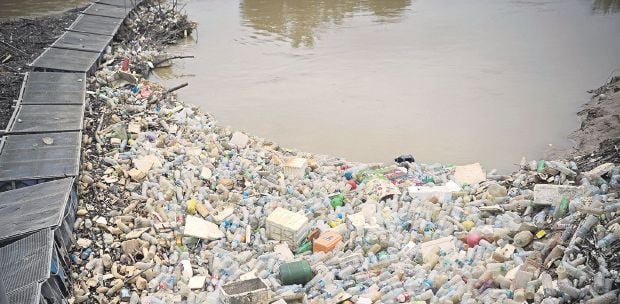KUALA LUMPUR: NATIONAL sewerage company Indah Water Konsortium Sdn Bhd (IWK) recently came under fire for the odour pollution that caused a major water supply disruption in the Klang Valley.
The public and the Selangor government were quick to point fingers at IWK, as it was found that contaminants had been disposed of in a IWK sewage manhole in Bandar Bukit Mahkota. The water disruption affected 1.5 million residents in Petaling, Hulu Langat, Kuala Langat and Sepang.
IWK chief executive officer Narendran Maniam maintained that IWK was a victim of vandalism and called on the authorities to come down hard on those guilty of causing pollution.
“This is an act of vandalism. The problem here is not about how vulnerable the manholes are, but the brazen polluters,” he said in an interview with the New Straits Times.
He said private tankers carrying domestic waste water and industrial tankers should be regulated.
“They cannot be allowed to operate freely. Industrial tankers carrying chemicals should head to (integrated hazardous waste management centre) Kualiti Alam. But they want to save money and take the easy way (by dumping it in manholes).”
Kualiti Alam owns and operates the only integrated hazardous waste management centre in Malaysia, Kualiti Alam Waste Management Centre in Negri Sembilan. The centre has the licence to handle 76 categories of 77 scheduled wastes listed under the Environmental Quality (Scheduled Wastes) Regulations 2005.
Narendran believed the issue of raw water pollution should be prioritised by all stakeholders as it could pose severe national security risks and hoped the Department of Environment of the Energy, Science, Technology, Environment and Climate Change Ministry would enforce stricter measures.
Other authorities that could play a bigger role in protecting our water resources, he said, were state governments, local councils, National Water Services Commission, Selangor Water Management Authority and Pengurusan Air Selangor Sdn Bhd.
He said public sewerage treatment plants (STPs) treated human waste, not industrial waste, so that was why the plants could not detect toxic or chemical waste.
“Treated effluent from the STPs is released into drains or waterways. In this case, it was released into Sungai Beranang that flows into Sungai Semenyih. This is a raw water source for the Sungai Semenyih water treatment plant.”
Narendran said the area targeted by polluters appeared to be isolated, comprising bungalow lots with several units already built.
“The culprits opened one of the manholes and dumped the black solvent, which has a strong smell. If we compare this with the first incident in September, the culprits appear to have moved to a different location.”

SECOND INCIDENT THIS YEAR
Narendran said since the Bukit Mahkota STP had been affected twice this year, IWK took measures to protect manholes, including covering 20 of them in the area with premix (tar) and plugging several others.
“We will have to desludge these manholes on a weekly basis using tankers instead of having the sludge flow directly to the STP. It is extra cost and work for us.”
Such measures, although effective, were not infallible as the premix could be removed and polluters could also find manholes in other areas.
“There are more than 400,000 manholes nationwide and almost 80,000 are located above water intake points. We have approximately 1,500 sewage treatment plants above water intake points. Are we going to do this at all manholes? What would the capital expenditure be?” Narendran asked.
“We have to scrape the tar each time for desludging or to carry out maintenance works and later reapply them. It is not an intelligent solution, but we have no choice. We don’t want this to recur.”
He said manholes were always locked, but they could be opened.
“Imagine a house with a high-end security system. Yet, if a thief wants to break in, he can do it. The same goes for our manholes.”
On suggestions to install sensors and closed-circuit television cameras (CCTVs) near manholes, Narendran said the security system would only work for a while.
“They need five only minutes to discharge (pollutants) and make a run for it, which would render the sensors useless. Besides, CCTVs can be destroyed or removed.”
He said IWK had plugged several manholes in the past because it was suspected that it was the same group of polluters that kept dumping pollutants due to the similarity in the chemical’s smell.
DETECTING ODOUR
On manpower, Narendran said IWK had 3,338 employees nationwide, with 615 vehicles and almost 7,000 STPs.
“There are 230 STPs above water intake points in Selangor, of which 33 STPs are above the Sungai Semenyih water intake point.”
He said plugs would have to be removed when an area became more populated to ensure smooth flow of waste water. He said the Bukit Mahkota STP and other plants would be manned round the clock to detect odours at the plant’s entry point.
“There is no equipment in the world that can detect odour. We have to rely on the human nose.
“Someone will go in and smell the waste every hour, but that is also hazardous.
“Nevertheless, the moment our worker smells something odd, he will shut down the plant. But how long can we do that? Today, the flow at this particular STP is only at 30 per cent, but the plant cannot contain the flow when the area is fully developed.”
Narendran warned that if the culprits were not caught, they would continue to find cheap and easy ways to dispose of waste, with household toilets, common drains and rivers being easy targets.
“We can have a world-class manhole, but we cannot manage people’s toilets. People throw so many things into the toilet.
“The culprits may also discharge waste directly into rivers and drains, and the same problem will continue to happen. That’s why stricter enforcement should be in place.”
He said the incident five days after Bukit Mahkota’s water pollution case was another act of vandalism — a similar substance was discharged into the Sungai Linggi water catchment.
He urged the public to play their part by taking pictures of suspicious tankers or if tankers were seen discharging substances into the sewerage system.
“The public should play an active role by becoming the ears and eyes of the authorities. We need your help to pursue the culprits and punish them.”
Narendran said IWK had been taking the fall for the incidents because “we are an easy target” by certain quarters.
“We have been adhering to all SOPs (standard operating procedures). We are taking extra effort to include smell as a criteria for inspection, although the DoE does not have this requirement.
“The waste goes to our asset and someone needs to be responsible, so we took it upon ourselves to do more.”
According to Section 61(1) of the Water Services Industry Act 2006 (Act 655), prohibited effluent or noxious matter should not be discharged into public sewer or public sewage treatment works.
A person who commits an offence is liable to a fine not exceeding RM100,000 or imprisonment not exceeding one year, or both, upon conviction.
On Dec 21, the Sungai Semenyih water treatment plant was forced to cease operations due to odour pollution in Sungai Semenyih caused by irresponsible parties who disposed of illegal waste with solvent into an inlet near a IWK plant.






